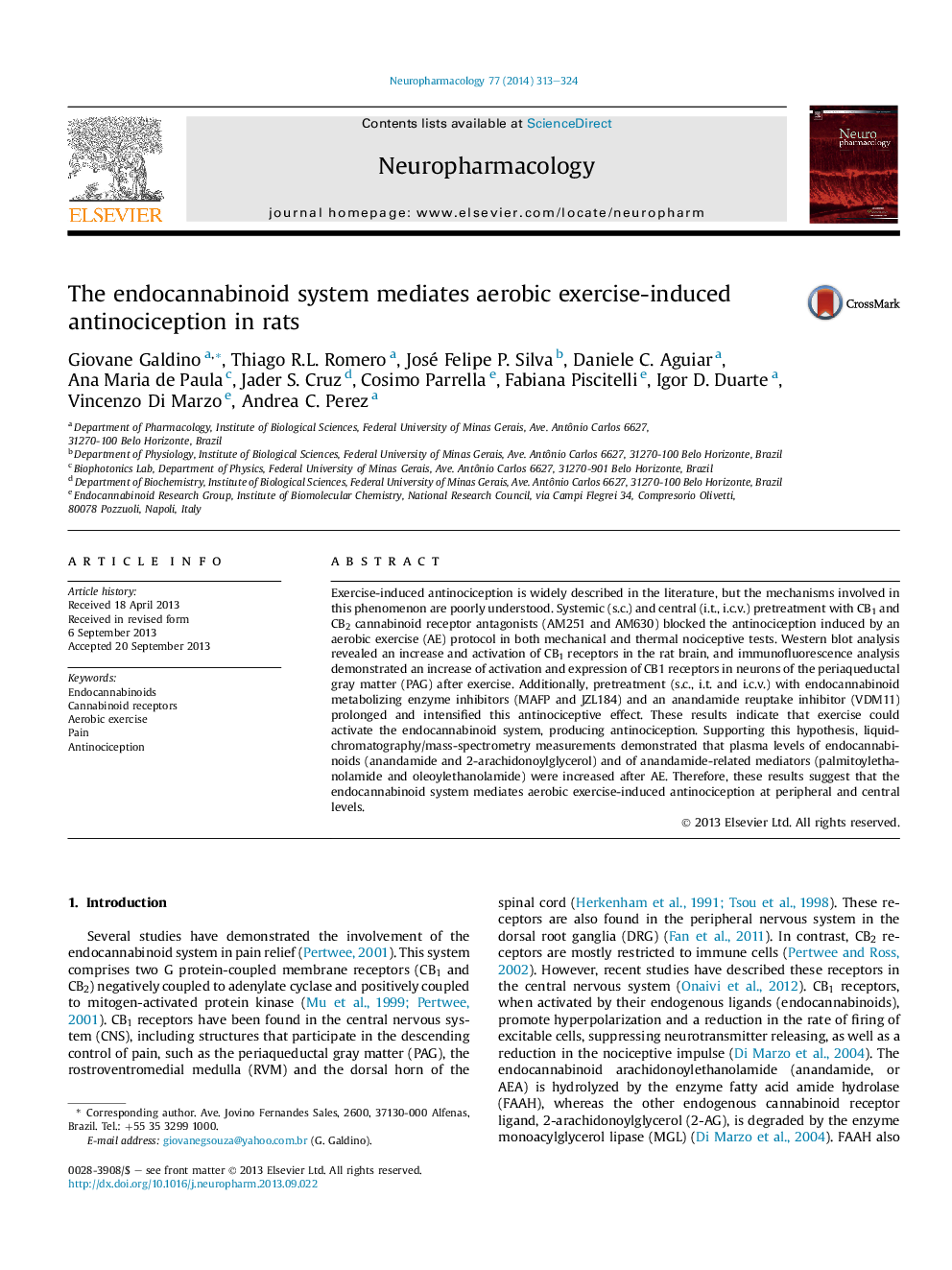| کد مقاله | کد نشریه | سال انتشار | مقاله انگلیسی | نسخه تمام متن |
|---|---|---|---|---|
| 5814883 | 1556637 | 2014 | 12 صفحه PDF | دانلود رایگان |
عنوان انگلیسی مقاله ISI
The endocannabinoid system mediates aerobic exercise-induced antinociception in rats
ترجمه فارسی عنوان
سیستم اندوسکانبینیدها باعث ایجاد اختلال در فعالیت های هوازی ناشی از ورزش در موش صحرایی می شود
دانلود مقاله + سفارش ترجمه
دانلود مقاله ISI انگلیسی
رایگان برای ایرانیان
کلمات کلیدی
اندو کانابینوئید، گیرنده کانابینوئید، ورزش هوازی، درد، ضد انعقاد،
موضوعات مرتبط
علوم زیستی و بیوفناوری
علم عصب شناسی
علوم اعصاب رفتاری
چکیده انگلیسی
Exercise-induced antinociception is widely described in the literature, but the mechanisms involved in this phenomenon are poorly understood. Systemic (s.c.) and central (i.t., i.c.v.) pretreatment with CB1 and CB2 cannabinoid receptor antagonists (AM251 and AM630) blocked the antinociception induced by an aerobic exercise (AE) protocol in both mechanical and thermal nociceptive tests. Western blot analysis revealed an increase and activation of CB1 receptors in the rat brain, and immunofluorescence analysis demonstrated an increase of activation and expression of CB1 receptors in neurons of the periaqueductal gray matter (PAG) after exercise. Additionally, pretreatment (s.c., i.t. and i.c.v.) with endocannabinoid metabolizing enzyme inhibitors (MAFP and JZL184) and an anandamide reuptake inhibitor (VDM11) prolonged and intensified this antinociceptive effect. These results indicate that exercise could activate the endocannabinoid system, producing antinociception. Supporting this hypothesis, liquid-chromatography/mass-spectrometry measurements demonstrated that plasma levels of endocannabinoids (anandamide and 2-arachidonoylglycerol) and of anandamide-related mediators (palmitoylethanolamide and oleoylethanolamide) were increased after AE. Therefore, these results suggest that the endocannabinoid system mediates aerobic exercise-induced antinociception at peripheral and central levels.
ناشر
Database: Elsevier - ScienceDirect (ساینس دایرکت)
Journal: Neuropharmacology - Volume 77, February 2014, Pages 313-324
Journal: Neuropharmacology - Volume 77, February 2014, Pages 313-324
نویسندگان
Giovane Galdino, Thiago R.L. Romero, José Felipe P. Silva, Daniele C. Aguiar, Ana Maria de Paula, Jader S. Cruz, Cosimo Parrella, Fabiana Piscitelli, Igor D. Duarte, Vincenzo Di Marzo, Andrea C. Perez,
